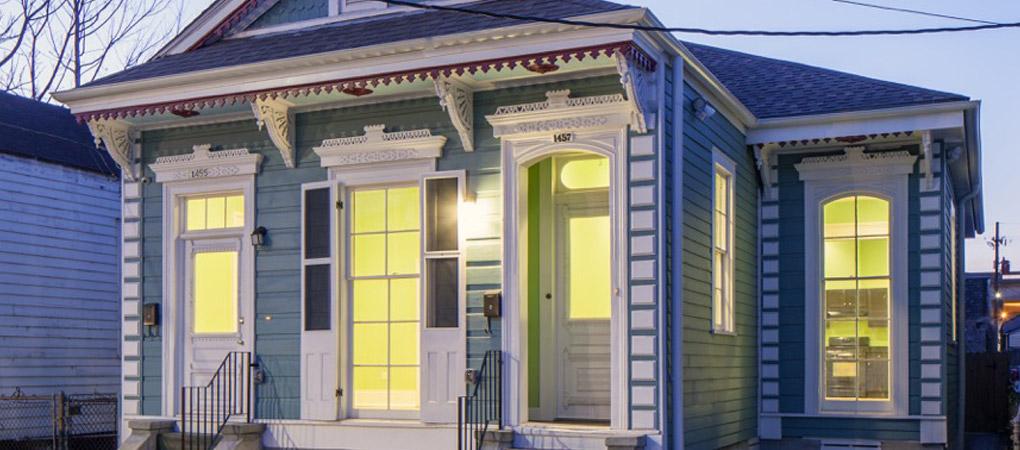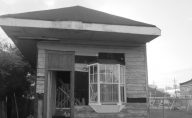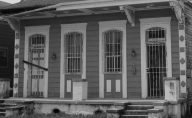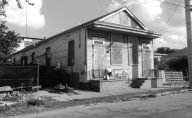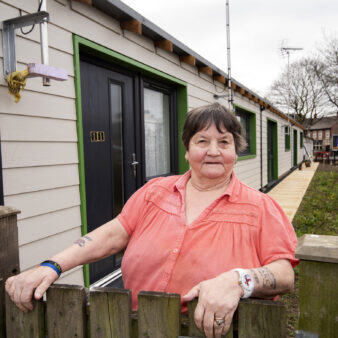Hurricane Katrina, which devastated the historic US city of New Orleans in 2005, left many people homeless, whole communities displaced and homes abandoned. The project is providing affordable homes for local people by renovating abandoned historic homes in neighbourhoods which are vulnerable to gentrification. A rental subsidy and an affordability restriction that runs with the land for 35 years together guarantee affordable homes for low-income New Orleanians who would otherwise be pushed out of their own neighbourhood.
Project Description
Hurricane Katrina, which devastated the historic US city of New Orleans in 2005, left many people homeless, whole communities displaced and homes abandoned. In the years following this natural disaster, large areas of the city have been rebuilt but much of this redevelopment has led to the gentrification of areas previously home to low income, predominantly African-American communities. The Iberville Offsites project focuses on reducing the ‘blight’ of empty and abandoned properties in inner-city areas while encouraging historic preservation and, most importantly, providing affordable housing to people displaced by Hurricane Katrina.
The project, run by local real estate company Redmellon, is providing affordable homes for local people by renovating abandoned homes in neighbourhoods which are vulnerable to gentrification. These historic homes are rehabilitated instead of being demolished so the historic fabric of neighbourhoods is maintained for existing communities. The long-term affordability of the housing is provided through a fifteen-year rental subsidy from the City of New Orleans Authority and an affordability legal restriction that runs with the land for 35 years which together guarantee an affordable home for low-income New Orleanians who would otherwise be pushed out of their own neighbourhood.
Construction began in 2013, with 46 homes completed in 2015, providing housing for 126 residents. A further 30 homes are due for completion in 2017.
The project gets its name from The Iberville Public Housing Project, a large, run-down development which the authorities wanted to redevelop into a mixed use community following Hurricane Katrina. There was great fear on the part of public housing residents that they would be permanently displaced. The aim of Iberville Offsites is to help the City of New Orleans and the Housing Authority of New Orleans to replace all of the housing units that were in the former Iberville development with renovated, individual homes within the local neighbourhood and not to replicate the previous poverty trap of low-income, multi-storey housing complexes.
Aims and Objectives
The Iberville Offsites Project set outs to accomplish many interrelated goals:
- Provide affordable housing for Hurricane Katrina refugees, many of whom are African-Americans and/or on very low incomes.
- Renovate existing blighted homes from within historic neighbourhoods where long-time residents are being pushed out.
- Improve living conditions for women and children involved in the New Orleans Women’s Shelter.
- Broaden the appeal and relevance of historic preservation beyond its traditional constituency of the affluent white population.
- Blight elimination and neighbourhood redevelopment are public policy goals of the City of New Orleans, the Department of Housing and Urban Development and Redmellon Restoration and Development and these shared objectives have been key to the success of this programme.
Context
Hurricane Katrina, which struck in 2005, flooded about 85% of the City of New Orleans and led to significant changes in its built environment. Immediately after Katrina, large public housing projects were demolished or completely transformed. Some low-lying neighbourhoods were not targeted for reconstruction as they were regarded as higher risks zones. As these neighbourhoods were made up mostly of African-American communities, this policy generated concerns amongst many residents, who feared that this was an attempt by the ‘white power structure’ to eliminate affordable housing and displace low-income Black families.
Seven years after Hurricane Katrina, the city’s population stood at 70% of its pre Katrina level and there were over 40,000 abandoned, empty homes. The housing context was already challenging before Katrina, with the number of blighted properties (empty and in extreme disrepair) already higher than Detroit, a city renowned for empty properties. The costs of renovating these homes would be more than market rents or sales prices would support but at the same time, the city was experiencing a severe shortage of affordable housing.
Although there were some state-supported finance mechanisms in place for the development of affordable housing, most of these supported the development of blocks of apartments that concentrated on alleviating poverty and weren’t necessarily designed or built well. In addition to these affordable housing funds, there were incentives for owners of historic buildings to sensitively rehabilitate their properties. However, these programmes were not designed to work together.
The housing in the Iberville Offsites redevelopment ranges from Creole cottages built in the mid-19th century to bungalow-style houses built in the early 20th century. There are several reasons that these historic homes are still standing:
- The older the house is, the older the timber is and while the New Orleans climate is ideal for pests, termites tend to prefer soft woods first. One hundred years ago, New Orleanians framed their buildings with cypress, a very hard wood.
The construction trades were apprenticed and great pride was taken in the construction of these homes. Many tradesmen were immigrants and Black freedmen who passed their knowledge on. Because of this pride of purpose, the buildings standards were higher, even before building codes and so these homes remain standing, over one hundred years later, while their contemporary counterparts have an anticipated life span of 30 years.
Key Features
By renovating these homes neighbourhoods are restored, both physically and socially. Continuing the history of a community of working class people living within the city means that another generation will grow up with the traditions of culture, food and music that make New Orleans unique.
The homes have been restored to ensure both historical preservation and comfort for the new occupiers.
The works include:
- reconstructing interior and exterior walls to replace rot and accommodate new insulation and weatherproofing;
- the removal of hardware floors, which were consolidated and replaced;
- brackets, mantels and other historical features were rehabilitated;
- kitchens and bedrooms were repositioned to more contemporary standards of privacy and to fit the needs of families;
- energy-efficient appliances and solar panels were fitted and a system of thermostat controls put in so the air conditioning system provides comfort whilst keeping utility bills at a minimum for residents.
The properties are owned by a single-purpose entity set up expressly to develop and own this project and is made up of Redmellon, the New Orleans Women’s Shelter and the Housing Authority of New Orleans.
Residents of the Iberville Offsites houses are selected by the Housing Authority of New Orleans and priority is given first to those displaced from public housing by Hurricane Katrina, then using a waiting list of low-income people in need of housing and finally by the project’s own waiting list. The residents are allocated houses that are already refurbished but they have the chance to ask for changes and give feedback to Redmellon about their experience in the house and how to improve it. They pay an affordable rent based on their income level.
The project is a public-private partnership. Among the project partners and stakeholders there is strong cooperation around the goal of reducing poverty and housing needs. The main partners are:
- The New Orleans Redevelopment Authority (identifying and buying land).
- Prudential Social-Based Investment Group (provided capital for land acquisition).
- Enterprise Community Partners (not-for-profit that helps channel tax credit equity to benefit small organisations).
- The City of New Orleans (political support for the project and 15 years’ commitment to subsidise the residents’ rent).
- The New Orleans Women Shelter and the Housing Authority of New Orleans (development partners).
The novel approach of Iberville Offsites was to use existing funding programmes that leveraged each other. This was achieved by using affordable housing subsidies to support work on historic preservation and blight elimination and by using historic preservation subsidies to provide affordable housing. This creative way of connecting funding streams to deliver affordable housing had not previously been explored in the city.
What impact has it had?
As a direct result of the Iberville Offsites Project, the City of New Orleans Local Authority has altered the application process local organisations use to apply for the federal funds it manages so that it is easier for them to leverage in state and other subsidies. This has increased the ability of more projects to access funding, which has brought public money and more housing to New Orleans.
These changes have included simple modifications so that the application processes of different funding streams match and deadlines are aligned so that organisations can apply to several funding streams jointly. In addition, programme guidelines at a state level were amended to encourage projects that rehabilitate existing, blighted homes.
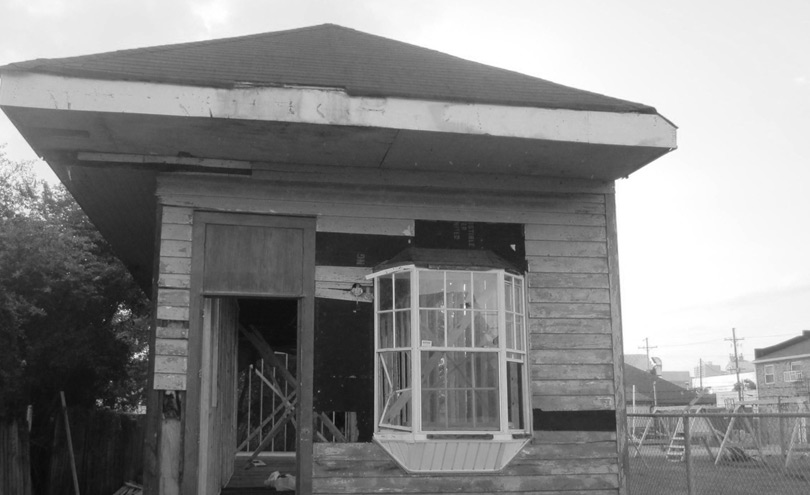
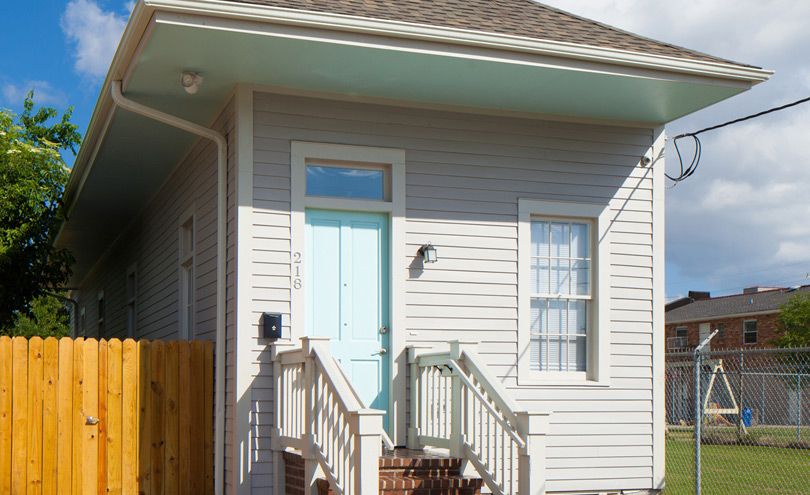
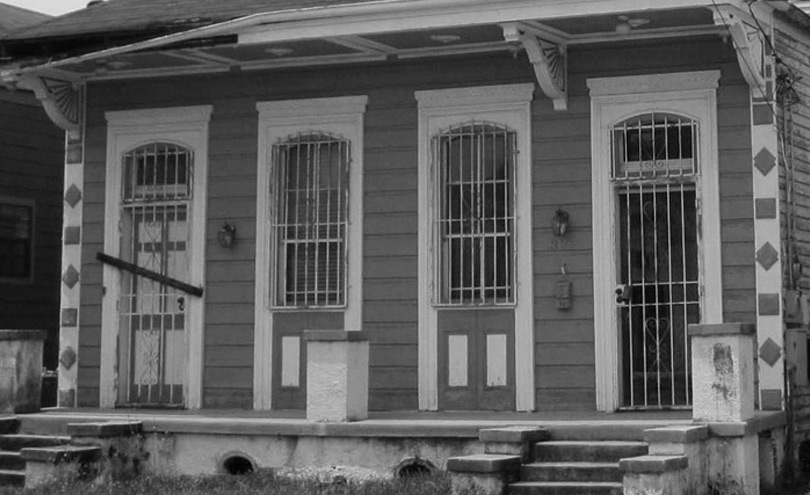
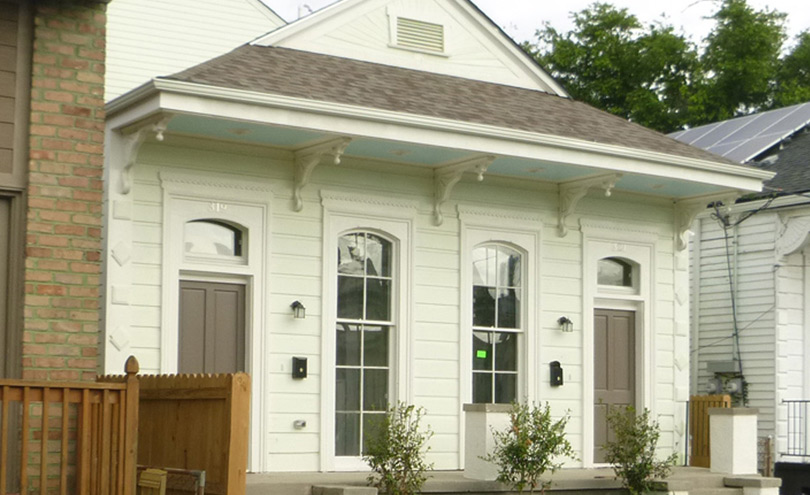
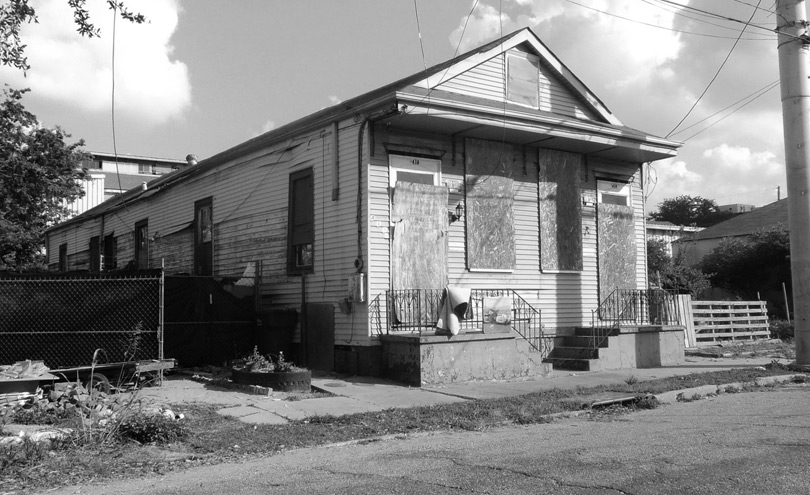
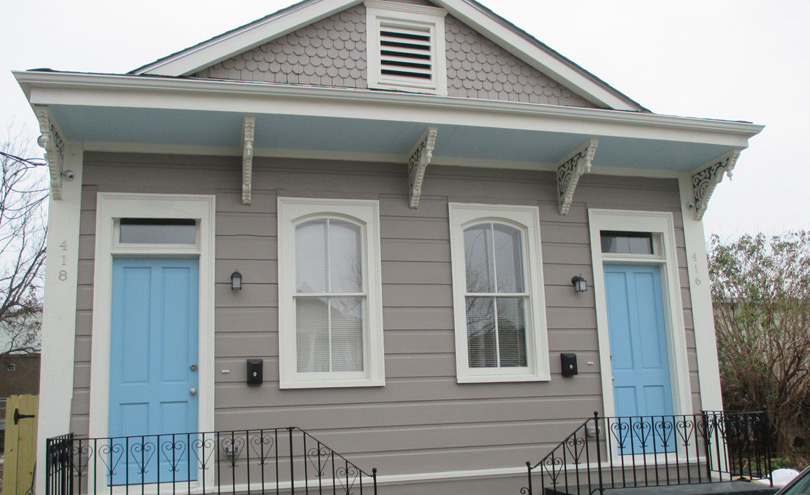
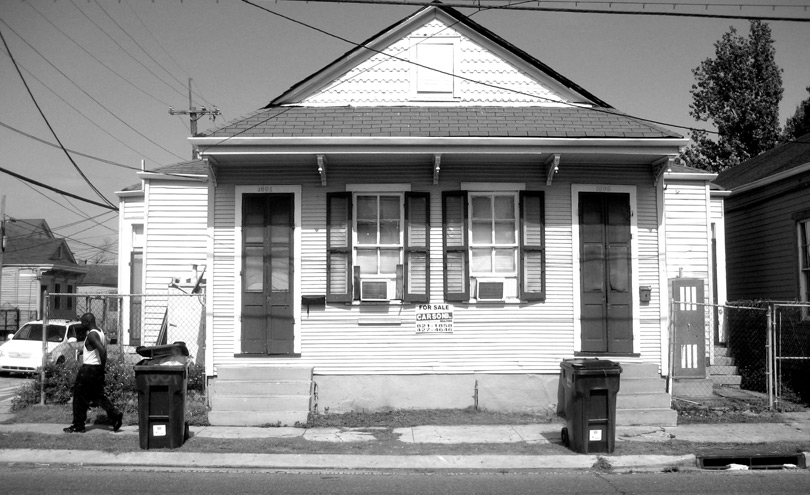
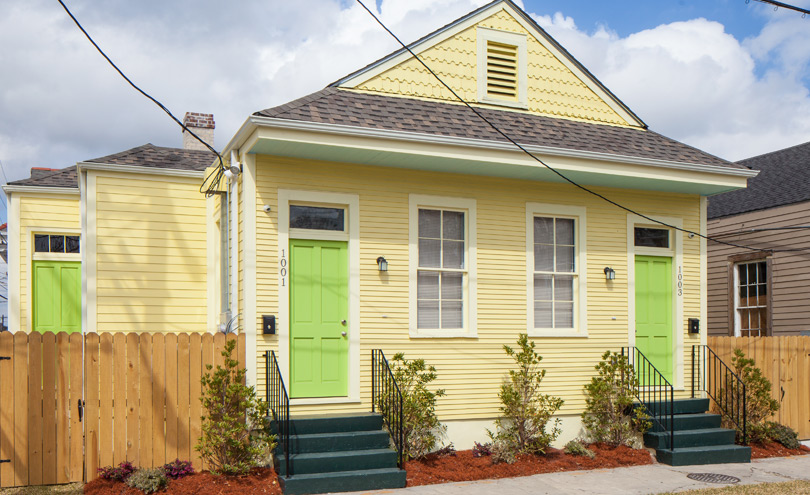
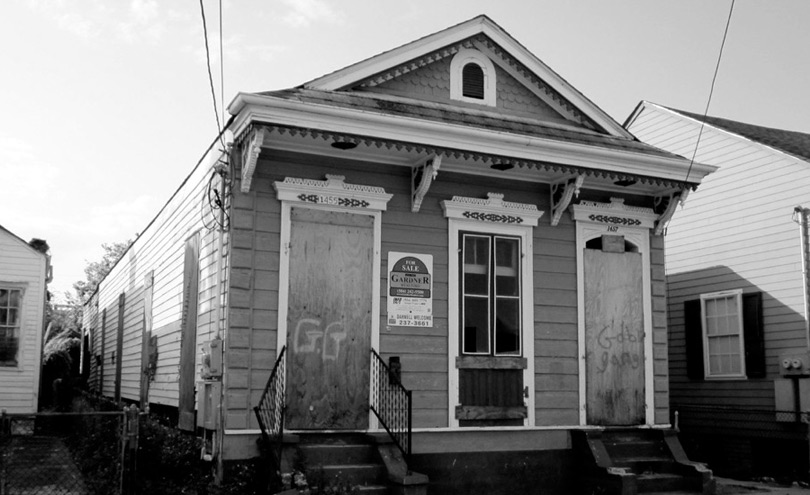
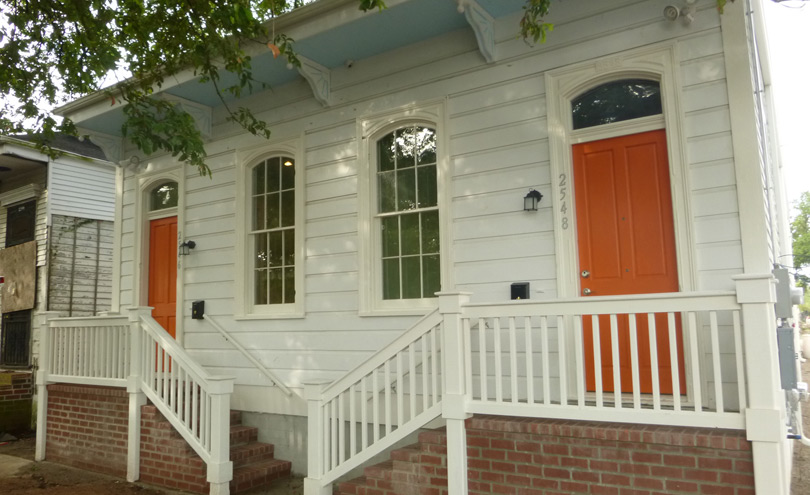
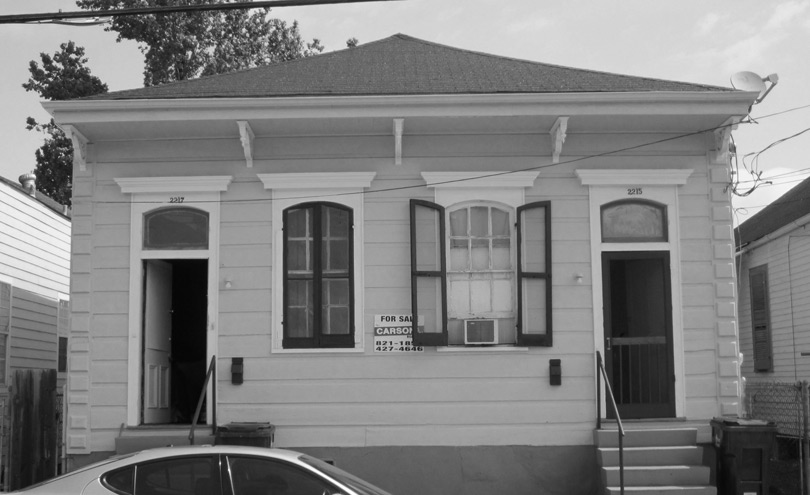
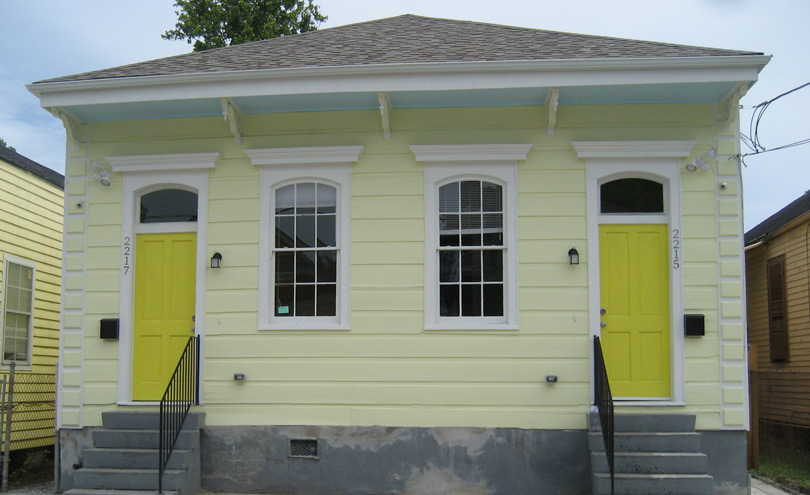
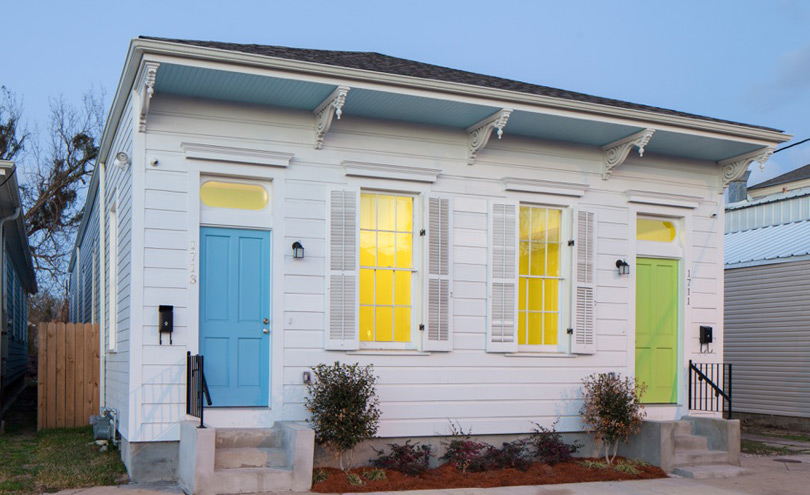
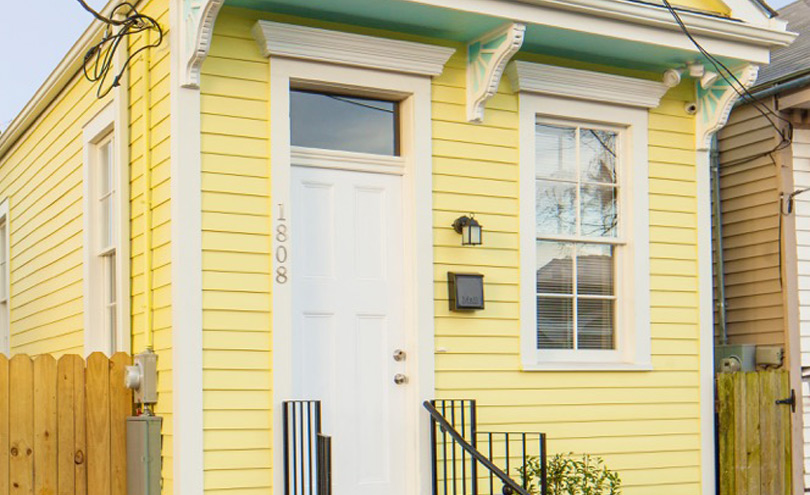

How is it funded?
The total cost of developing the Iberville Offsites Project over the three phases of construction is approximately USD $20 million. The capital costs for development were met from funds provided by multiple sources:
- Prudential Insurance provided approximately USD $800,000 in debt to help purchase blighted properties for the project through their social-based investment programme
- Through a competitive application process, the Iberville Offsites Project was awarded USD $17.6 million of Federally-funded Low Income Housing tax credits that are claimed over a ten-year period. These credits generated equity for construction through an arrangement with Enterprise Community Partners.
- The City of New Orleans provided loans and grants of USD $1.1 million with funds from the Federal government ‘Neighborhood Stabilization’ and HOME Investment Partnership programmes.
- The remaining funds needed were provided by the developer through loans and deferred developer fees.
The annual, ongoing operating expenses, which include the costs of maintenance, repairs, property management, insurance, property taxes, accounting and legal fees will be approximately USD $625,000 per year once the third phase is fully leased. These operating costs are covered by rental revenue mostly received from the Housing Authority of New Orleans and a small portion paid by each individual tenant determined by their income level.
Tenants pay between USD $15 and USD $150 per month in rent and the exact amount they pay is related to their income. This enables local people to access housing which would otherwise have a considerably higher market rate (between USD $800 and USD $1,300 per month).
Why is it innovative?
Iberville Offsites demonstrates a way to use subsidies to renovate existing, blighted, single-family homes at a large scale through both innovative layering of subsidies and new ways of contracting:
- The issue of empty properties is common to cities across the USA, as well as an issue in other countries around the world. In the US, most of the subsidies that are in place to fund affordable housing encourage the creation of new apartment projects because that is where housing developers get economies of scale. The existing blighted housing stock remains.
- With historic rehabilitation there is a large potential for the scope of work to increase because of unforeseen conditions and contractors often make the majority of their profit on change orders, with costs met from a contingency budget not the base contract. As a result the traditional construction process doesn’t work in favour of the client with contractors able to increase their scope of work (and profit) via change orders. However, this project took a different approach by taking the contingency and giving it to the contractor upfront. At the same time the contract is written so that all of the risk from change orders fall on the contractor and not the client so the contractor has an incentive to find inexpensive solutions to problems because this increases their net profitability.
- This feature of ‘ZERO dollars contingency’ and no change orders is unheard of for a rehabilitation project because there is a huge potential for the scope of work to explode due to unforeseen conditions (especially one with so many different buildings that are in such poor shape) and the success of this initiative lay in the ability of partners to negotiate a contract structure which effectively aligns the interests of the client and contractor.
A further innovation of the project relates to a technical issue. The Iberville Offsites trialled a new use of spray foam insulation which enabled effective insulation to be used without damaging the original timber frame. Spray foam is usually avoided on historic buildings since it can compromise the preservation and integrity of the structure. The Iberville Offsites Project employed an innovative method in which a removable barrier is wrapped around the historic framing, protecting it from the spray.
What is the environmental impact?
All of the homes within the project are renovated according to one of two US environmental standards for construction: LEED (Leadership in Energy and Environmental Design Green Building Rating System) or Enterprise Green Communities standards. Most have solar photovoltaic systems and all aim to keep energy consumption to a minimum. Residents’ utility bills have been reduced compared to those in their previous homes.
As a general rule, the greenest building is the one that is already built as it can take many years (between 10 – 80 years) for a new building which has been built at 30% above average energy efficiency to overcome the negative climate change impacts of construction. The Iberville Offsites reuse existing structures keeping the environmental impact and embodied energy low compared to the construction of new houses. The alternative of demolishing these historic buildings would also mean that the resources of timber, bricks, plaster and flooring are wasted and materials of this calibre (e.g. hardwoods) are too expensive to use in new construction.
All of the Iberville Offsites houses are built to a standard that protects them against hurricanes, including the use of windows which are resistant to flying debris. These windows are also compatible with historic rehabilitation guidelines. As most damage to the inside of a house during a hurricane is caused by water coming through the roof, damage is minimised by strapping the roofs on within the attic. The homes have not been raised (due to restrictions placed on renovating historic structures) but they are all on piers that allow flood waters to flow underneath. This is particularly important as the entire city of New Orleans sits below sea level, so every drop of rain that falls has to be pumped out of the city and into the nearby lake.
Is it financially sustainable?
In an effort to develop mixed income communities and provide replacement housing for former public housing residents who were displaced by Hurricane Katrina, the federal department of Housing and Urban Development (HUD) and the City of New Orleans provided an upfront commitment for a fifteen year rental subsidy. This allows the income from tenants’ rents to support the project on an ongoing basis so all operating expenses are borne by income generated from the project and no additional subsidies are required.
There is an affordability legal restriction that is filed in the public record that runs with the land for 35 years. Any new owner that buys the project is subject to the same affordability restrictions or the state agency that manages the programme can repossess the land. This helps maintain the affordability of housing to residents throughout time.
What is the social impact?
The project targets citizens who are from vulnerable and low-income groups and who would have had very limited opportunities for housing on the open market, with the potential of being stuck in cycles of poverty. The aim is to create a knock-on effect so improved housing will translate into improved opportunities for individuals.
The Iberville Offsites Project was set up to create and supply affordable housing for city residents who want to stay in their increasingly changing and gentrifying neighbourhoods. The project helps residents continue or establish neighbourhood connections that are integral to the fabric of the city. As rents and home prices escalate, the area’s average income has stayed static, effectively ‘pricing out’ residents on fixed or low incomes. The project has helped in reducing social inequality by providing affordable housing to residents on low incomes, whilst also changing the narrative by which historical renovation is mostly for white middle-class families.
The approach not only supports individuals but aims to improve neighbourhoods as a whole. The renovated houses do not look like low-income housing and this means that residents are part of the community and not stigmatised for living in substandard accommodation. Redmellon has achieved this by dedicating time and resources to land banking in blighted neighbourhoods and has acquired enough properties to change the face and the feel of neighbourhoods as a whole, instead of, for example, just creating one apartment block with 50 units. This would have been cheaper to deliver but would not have generated wider benefits.
Barriers
One of the obstacles that project staff came up against repeatedly was an attitude of “Well, this is the way it has always been done.” It seemed that each funding programme had numerous procedures and regulations that were very well intentioned but often valued process over results. Redmellon was fortunate that there was a core team of stakeholders that viewed themselves as ‘creative troublemakers’ who would then respond, “Well, given the rules how can we make it work?”.
The ability to work within the rules associated with funding programmes to make them compatible with other programmes and the needs of future residents became crucial. Another example of this came up when they looked at aligning the interests of the contractor and themselves as the client, one of the funders claimed the costs were too high and the rules required them to budget for contingencies. It was only after explaining how the incentive structure would actually solve problems and keep costs down, that the City understood and waived some of its requirements. Redmellon feels that some of their success comes from having a team of goal-oriented stakeholders who were very persistent.
In some instances, overcoming restrictions was particularly challenging. For example, the original intent of the programme was to give women from the New Orleans Women’s Shelter housing units within the Iberville Offsites Project, in order to transition out of shelter. But one of the restrictions of the project funding made it impossible to do this. Given this bottleneck, the solution that was found for vulnerable women to still benefit from the project was for the New Orleans Women’s Shelter to become a Development Partner. In this way, it could take the majority of the Development Fee generated by the project, which could be used to build a new shelter to house more women and children. Despite not being able to achieve permanent housing as hoped, this still improved living conditions of the women in the shelter and their families. Currently, the New Orleans Women’s Shelter provides residencies for up to 50 women and children at any one time, including a bedroom and meals for each family, at no cost to the residents themselves for as long as they need it.
One of the other challenges came in managing the relationship with contractors during the construction process, especially given the number of different buildings all with different architectural plans and different renovation requirements. Contractors endorsed the idea of getting paid the contingency upfront but then still wanted to be able to do change orders, despite this being against the contract. So it took a level of trust, experience and relationship management for the contractor to agree to take the risk of bearing the related costs linked to change orders.
Lessons Learned
Patience and persistence are key. For example, if you have successfully explained something to someone in one department it doesn’t mean that you won’t have to do it again later, perhaps even again the next day.
It is important to give credit to other people and listen when someone has expertise you do not have but those driving the project shouldn’t be afraid to lead. Everyone has their area of expertise but someone needs to have the role of guiding the talents of others and pushing the project forward.
It is easy for funders to pursue projects that fit with what they know. They need an incentive to be willing to do something different. It is okay for the financial reward for various players (e.g. a bank) to be high. Important ‘yes or no’ decisions are often a close call but if the incentive is greater, then people are often inclined to say ‘yes’ and move the project forward. You need to give people the reason to come on board and then once you are partners, you can overcome barriers together.
Evaluation
The project has to ‘report back’ to several partners that support various aspects of their work. They have different goals and focus on different aspects, for example, banks focus on yields, residents on quality of housing and liveability and redevelopment authorities and housing agencies on a combination of return and social impact.
Redmellon focus on the following questions, which they evaluate via a range of tools. If the answer is ‘yes’ to all three questions then they consider the project is a success:
- Did it improve the built environment?
- Did it meaningfully improve the lives of the urban poor?
Was it a financially worthwhile project for themselves and partners?
Recognition
- The project was recognised by the Congress of New Urbanism as a Global Grand Prize Winner for Excellence in Urban Design.
- It also received the HUD Secretary’s Award from the National Trust for Historic Preservation.
- Last year Al Jazeera profiled Redmellon and the project as part of its coverage of the 10 year anniversary of Hurricane Katrina. The video has received over 2,500,000 views on Facebook https://www.youtube.com/watch?v=QW3tV4C8IGM.
Transfer
Redmellon’s ability to build or renovate housing is limited by the maximum allowable funding allocations per project as set by the various funding sources. That said, they believe the impact of their work and this project on the built environment should be more than just the homes built or renovated. They believe their methodologies can be transferred elsewhere and they have welcomed the attention from the Secretary of Housing and Urban development (HUD) the Congress for the New Urbanism (CNU) and the National Trust for Historic Preservation because it shows others that there is a way to scale up this type of single-family rehabilitation.
At the invitation of one of their funding partners (Prudential Insurance Company), they are currently working on a project in Newark, New Jersey where the insurers have their headquarters and there are significant numbers of abandoned, empty properties. Prudential owns a large part of the city centre in Newark and having worked with Redmellon several times they have asked them to redevelop some of their buildings there. The first project is a large, historic office building in central Newark that was built in the 1920s and renovated with a modernistic ‘skin’ in the 1950s. They are converting the building into approximately 45 residential units for low-income residents.

